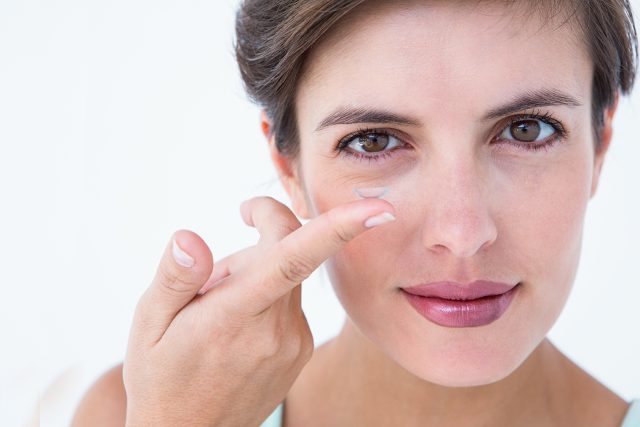Q & A: What is Keratoconus? How can special lenses help?
There are special lenses to treat:
- Keratoconus
- Injuries, diseases, and congenital problems that have caused distortion of the cornea.
- Pellucid Marginal Degeneration
- other diseases that cause distortion of the cornea

What is Keratoconus?
Keratoconus (ker-at-o-conus) is a progressive eye disease that affects the cornea. The cornea is the front part or “cover” of the eye and is the first and most important surface when light enters into the eye. In Keratoconus, the normally round shaped cornea becomes thin and begins to bulge into a cone-like shape. This often begins when someone is in their teens or 20’s. As light passes through the distorted cornea, it causes distorted vision. Vision becomes worse depending on the amount of cornea that is affected. Keratoconus can occur in either one or both eyes. There can be scarring (clouding) of the cornea which further makes it difficult to see and may necessitate a corneal transplant. The most likely reason for keratoconus is genetic. If affects both girls and boys and may be greater in one eye than the other. Keratoconus affects about I person in every 2,000-3,000.
As the cornea becomes more irregular in shape, individuals become more and more nearsighted, have more astigmatism, and become sensitive to glare and light. Eyeglass prescriptions change rapidly. As the condition worsens, there is more distortion in the cornea. There is usually a high amount of astigmatism.
Keratoconus can be difficult to detect and the diagnosis of Keratoconus is commonly missed if the practitioner is unfamiliar with the early-stage symptoms of the disease.
A special instrument called a Corneal Topographer measure 8,000 points of the cornea to give us a precise map. Each cornea is unique in shape, similar to the uniqueness of your “fingerprint”. This information is then used to build custom lenses to the unique corneal shape.

How do Special Lenses treat this?
Special contact lenses specifically designed for keratoconus can reduce the need for a corneal transplant. Customized lenses are made specifically for that cornea, and this means better comfort and clarity. At times, a soft lens can be used to restore sight but usually, special gas permeable contact lenses are needed to restore vision.
Scleral and semi-scleral lenses are lenses that are about the size of a normal soft contact lens and made in gas permeable (GP) materials. They rest on the white part of the eye (sclera) rather than on the cornea. They cover the irregularly shaped cornea and feel more comfortable than prior designs. The Boston Scleral Lens Prosthetic Device (BSLPD) is simply a scleral lens that has been given a proprietary name.
Custom lenses prescribed in our office have very positive outcomes. They are done close to home and usually at considerably less cost.
Special Scleral Lenses are used for The Treatment of Advanced Keratoconus, Pellucid Marginal Degeneration, and Post-Lasik Ectasia. These special Scleral Lenses are also used to help restore vision and comfort for those individuals who have had loss of vision due to Corneal Transplant Surgery or Refractive Surgeries such as Lasik, RK, PRK. They are also used when an eye has a chronic disease or has had trauma to the cornea. People with severe dry eye also find relief when using scleral lenses.








Appointment times may vary so call us for availability.